Jena Labs Njord AES-EBU Digi-Link cable by Terry London
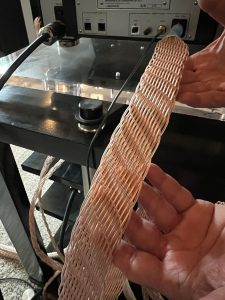
 Over the last fifteen years, I have had a long odyssey of experimenting with many digital cables. These numerous cables were from manufacturers like Stealth, Kimber, Nordost, Purist, Acoustic Zen, Sablon, and Hijiri. Yes, there were subtle and nuanced differences between the various digital wires. The different digital cables were not clones, but the differences were more what I call quantitative, with slight differences in tonality, spatiality, and dynamics, but staying at the same level/category of performance. None offered what I would term a qualitative or transformational shift to a higher level of musical enjoyment. I finally settled on using the fine-sounding Black Cat 3202 AES/EBU Digit 75 MKII, which became my reference digital connection for over five years. I had not become derisive regarding digital cables, but my efforts and finances could be used more productively, centering on other changes in my system to increase its performance.
Over the last fifteen years, I have had a long odyssey of experimenting with many digital cables. These numerous cables were from manufacturers like Stealth, Kimber, Nordost, Purist, Acoustic Zen, Sablon, and Hijiri. Yes, there were subtle and nuanced differences between the various digital wires. The different digital cables were not clones, but the differences were more what I call quantitative, with slight differences in tonality, spatiality, and dynamics, but staying at the same level/category of performance. None offered what I would term a qualitative or transformational shift to a higher level of musical enjoyment. I finally settled on using the fine-sounding Black Cat 3202 AES/EBU Digit 75 MKII, which became my reference digital connection for over five years. I had not become derisive regarding digital cables, but my efforts and finances could be used more productively, centering on other changes in my system to increase its performance.
 Then, about four months ago, I received an email from one of my readers, who has great ears and taste in stereo gear, asking if I had ever heard of any of the Jena Labs digital cables. I was familiar with Jena Labs, located in Portland, Oregon, in two ways. First, I had heard different systems through the years that used full looms of Jena Labs wires that sounded superlative. Secondly, I had read numerous positive reviews by professional reviewers and lay reviews by owners that touted the special virtues of the Jena Labs cables. Now, I was intrigued to set up a review to see if a Jena Labs digital cable could be as transcendent in my system as it was for my reader in his system.
Then, about four months ago, I received an email from one of my readers, who has great ears and taste in stereo gear, asking if I had ever heard of any of the Jena Labs digital cables. I was familiar with Jena Labs, located in Portland, Oregon, in two ways. First, I had heard different systems through the years that used full looms of Jena Labs wires that sounded superlative. Secondly, I had read numerous positive reviews by professional reviewers and lay reviews by owners that touted the special virtues of the Jena Labs cables. Now, I was intrigued to set up a review to see if a Jena Labs digital cable could be as transcendent in my system as it was for my reader in his system.
I contacted Jennifer White Wolf-Crock, the inventor, developer, and assembler of all the Jena Labs cables. Jennifer was an absolute delight to work with setting up this review. She wanted to know what equipment was in my reference system so she could pick what level of digital cable to send me for review. In all the Jena Labs cables, there are different levels, each building adding to its performance as you go up the chain. You can start with very inexpensive interconnects that cost $425 a pair and end up with cables that cost $10,625. Jennifer decided that the quality of my system merited that she would send a Haldi Digi-Link AES/EBU, which retails for $3,050. The Haldi is at level four out of six different levels of Jena Labs digital cables.
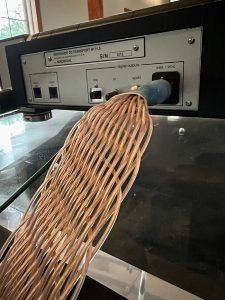
Here’s a description of the materials and the special cryogenics Jena Labs uses in their digital cables.
The basic building block of the Haldi Digi-Link is the Jena Labs legendary 22G Ultra-Wire. Each Ultra-Wire strand is an ultra-high purity, linear crystal, stress-free, super annealed, micro-polished, ultra-fine stranded copper. It is jacketed in a modified PE dielectric, which offers dissipation and dielectric constant figures similar to Teflon but without mechanical resonance problems. A special extrusion process allows the insulation to exert a high inward radial force on the wire strands, thus reducing audio-smearing micro-vibration.
The Deep Immersion Cryogenic treatment entails a cold chilling process culminating in the immersion of the cables in liquid nitrogen, also known as LN2. The boiling point of LN2 is 320.4 Fahrenheit or about 400 F below warm room temperature. In the liquid state we use, the LN2 is colder than this temperature. Exposing metallic objects to this extreme cold causes beneficial molecular changes to occur. As metallic objects cool, they shrink. With the extreme cooling and the shrinkage that follows in LN2 immersion, the crystal boundaries of metallic conductors align more closely with one another and become more conductive and “quieter.” Mechanical integrity is also improved. The improved molecular condition stays intact through the slow warming process and is stable at room temperature. When conducting an electric signal, the treated wire will produce less micro-diode-effect noise, less impurity inclusion field disturbance, and less “slow field” transverse energy generation. The result is a quieter cable in the noise floor and more revealing of subtle musical nuances.
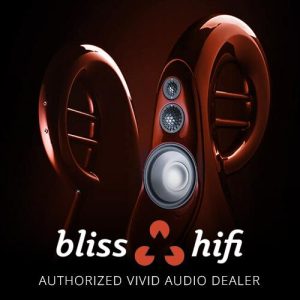 Jennifer also shared that depending on how many strands of individual wires are being used in her more complex woven designs, it can take minimally a day for some of the lower level cables to hand weave and up to a week to finish the weaving process on the higher level designs. As you go up in her cables, they become thicker, and the width increases as she weaves multiple strands of wires in a complex geometric pattern. The cables remind me of excellent hand-crafted Italian gold rope and filigree bracelets in their construction. The appearance is striking not only because of this complex weave design but also because each copper wire, which can be easily seen through their jacket covers, has a pleasing pinkish glow, which I believe is caused by the intense cryogenic treatment. All levels of Jena Labs cables are highly flexible, making them a dream when installing them in your system. The Jena Labs cables are highly labor-intensive and very time-consuming in their construction. These are genuinely hand-weaved artesian creations from the hands of a master.
Jennifer also shared that depending on how many strands of individual wires are being used in her more complex woven designs, it can take minimally a day for some of the lower level cables to hand weave and up to a week to finish the weaving process on the higher level designs. As you go up in her cables, they become thicker, and the width increases as she weaves multiple strands of wires in a complex geometric pattern. The cables remind me of excellent hand-crafted Italian gold rope and filigree bracelets in their construction. The appearance is striking not only because of this complex weave design but also because each copper wire, which can be easily seen through their jacket covers, has a pleasing pinkish glow, which I believe is caused by the intense cryogenic treatment. All levels of Jena Labs cables are highly flexible, making them a dream when installing them in your system. The Jena Labs cables are highly labor-intensive and very time-consuming in their construction. These are genuinely hand-weaved artesian creations from the hands of a master.
When I installed the Haldi Digi-Link AES/EBU cable between the Mark Levinson 31.5 transport and the Reimyo DAP-999EX Toku DAC in my reference system and played my first selection, I was immediately and patently amazed at what I was hearing. I just shook my head and mumbled, “You got to be kidding me!” In the context of my system, which is finely tuned with external grounding rods, isolation devices, precise speaker placement, and synergy between the different components, I expected to hear some subtle differences when placing the Haldi in the system. But what I heard was a significant and qualitative shift to a higher level in these sonic categories:
Tonality—The density of color was increased; for example, the brassy timbres of a trumpet became more vivid and lifelike. I also used descriptors such as sumptuous and beautiful to address this change in timbres and tonality compared to my baseline before the Haldi was installed in the system.
Spatial Dimensions – The following changes were the most startling. An increase in holographic imaging kept the size of individual instruments realistic and more precisely placed them on the soundstage. I would also refer to this as image density or rock-solid placement that created the illusion of musicians playing in a three-dimensional acoustic space. Another spatial change was more apparent in specific recordings. I heard the deepest recesses of the back of the soundstage and reflections off the back or side walls of the original recording venue that raised the semblance of being in that space, not in my room.
Transparency -The Jena Labs Haldi Digi-Link AES/EBU cable tremendously increased the clarity of my system, which already had an extremely low noise floor because of star grounding & external grounding rods, so that the most minute micro-details were easily heard, and decay trails would linger until they disappeared into the air around them. None of the above was presented with any etch or in an analytical manner. The music was presented in a continuous/seamless/natural fashion, but not in the sense of listening to it “under a microscope.” Many listeners would describe this as a vinyl record “analog” presentation.
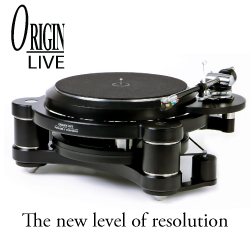 Dynamics – The transient speed, sense of aliveness, and the PRAT (Pace/Rhythm & Timing) were taken to a higher level in the system through the Haldi cable. Another noticeable change with this cable was in the mid and lower bass regions. These lower register frequencies offered more percussive and extended accurate bass with the Haldi. I readjusted my pair of NSMT double band-pass sub-woofers to seamlessly blend with the NSMT Clairvoyant monitors.
Dynamics – The transient speed, sense of aliveness, and the PRAT (Pace/Rhythm & Timing) were taken to a higher level in the system through the Haldi cable. Another noticeable change with this cable was in the mid and lower bass regions. These lower register frequencies offered more percussive and extended accurate bass with the Haldi. I readjusted my pair of NSMT double band-pass sub-woofers to seamlessly blend with the NSMT Clairvoyant monitors.
However, none of the above sonic attributes drove the “flavor” of my system towards uber-resolving or what I call a hi-fi sound. I find this quite unpleasant when a system sounds like a great hi-fi rig but not natural, beautiful music.
About three weeks into my review process, I wanted to see if the Jena Labs Haldi Digi-Link AES/EBU cable would bring its magic to a different system. I recruited fellow Stereo Times reviewer and friend John Hoffman for this task. I did not share my experiences regarding the superlative performance of the Jena Labs cable. I just asked him to listen to it in his excellent system and give me his impressions of it in the context of his rig. John installed it and about three hours later called, and his first words were, “This cable is phenomenal! It’s hard to believe what it’s doing in my system. Can I purchase this one because I don’t want to leave my system?”. In the next few days, we had lengthy, detailed discussions of what he was hearing with Haldi in his system. We came to the same conclusion as I did: the Jena Labs created a transformational change to a higher level of musicality in his system.
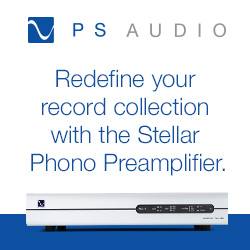 When I shared my positive take on the Haldi cable with Jennifer, she calmly accepted my findings, saying, “I’m very pleased you are enjoying it. Therefore, I really would like you to hear my Njord reference digital cable (the retail price is $7,050) which I believe takes the performance level even higher”. Of course, I said I would be eager to hear about her ultimate digital cable! After the conversation, I started to ponder: How much better could it be? What more could the Njord offer compared to Haldi? What sonic parameters could be improved? The Njord could be different, but would it be better than its less expensive sibling?
When I shared my positive take on the Haldi cable with Jennifer, she calmly accepted my findings, saying, “I’m very pleased you are enjoying it. Therefore, I really would like you to hear my Njord reference digital cable (the retail price is $7,050) which I believe takes the performance level even higher”. Of course, I said I would be eager to hear about her ultimate digital cable! After the conversation, I started to ponder: How much better could it be? What more could the Njord offer compared to Haldi? What sonic parameters could be improved? The Njord could be different, but would it be better than its less expensive sibling?
About a month later, the Njord cable arrived. Yes, it was apparent that the Jena Cables reference Njord cable outperformed the less costly but terrific Haldi. When I installed the Njord cable in my system, it was clearly and immediately discernible that the stellar sonic attributes I described regarding the performance of Haldi were taken to an even higher level in the Njord without changing the overall voicing of my system.
Two weeks ago, I received a request from Brian Savage, who turned out to be a fine gentleman, to come visit to hear my reference system because he was very interested in possibly purchasing the NSMT System Two speakers. However, after reading my review, he wanted to audition them to see if they were what he sought for his system. He flew from Dallas, Texas, to my home just outside Chicago on Saturday morning and spent about three hours intensely listening to the system. I have shared Brain’s experience below about my system because much of what he describes as virtues were significantly brought to this level of performance because the Jena Labs NjordDigi-Link AES/EBU is in the system.
My wife was very excited to hear what I thought of the Clairvoyant System Two speakers when I got home, but I found myself at a bit of a loss to relay the full impact of the experience. I told her all about the rich, dense tone colors, the holographic imaging, the massive soundstage, the startling dynamics, the small, quiet details that emerged from within the louder soundscape, and the articulate and powerful bass. But, somehow, that didn’t seem to communicate the emotional response of being immersed in that kind of performance.
The Beethoven 6th was the best example of the inexplicable experience. I found myself looking at different performers on the stage as they commanded my attention. I enjoyed the interplay among the musicians and wondered how a human mind could have composed such an incredible piece of music that could powerfully stir the listener’s emotions. The sound of the speakers and system was conspicuously absent from my thoughts. There was simply no capacity for critical evaluation of the equipment while I was completely focused on the musical performance of the artists on stage. As I write that, I realize that perhaps the best explanation of the inexplicable that I can offer is that the system disappears as the artists appear.
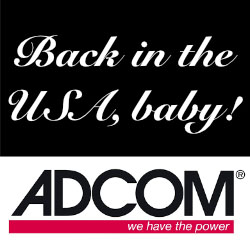 As I have stated in my other reviews, there is no “BEST” in the world, but there are many fine pieces of high-end audio gear. My amazement and pleasure at what the Jena Labs Haldi and Njord Digi-Link AES/EBU cables brought to my system and why I believe both are the highest-ranking digital cables today is clearly stated in my review. Remember, I had gone through scores of highly regarded digital cables, and none of them ever came close to rendering the excellent results that the Jena Labs digital cables brought to my system. They are expensive. However, if your system is at a high level of performance and your front end is digitally based, the expenditure on either Jena Labs digital cable is well worth it because of what it would bring to your system’s performance. The Njord will not leave my system. It’s my new reference digital connection.
As I have stated in my other reviews, there is no “BEST” in the world, but there are many fine pieces of high-end audio gear. My amazement and pleasure at what the Jena Labs Haldi and Njord Digi-Link AES/EBU cables brought to my system and why I believe both are the highest-ranking digital cables today is clearly stated in my review. Remember, I had gone through scores of highly regarded digital cables, and none of them ever came close to rendering the excellent results that the Jena Labs digital cables brought to my system. They are expensive. However, if your system is at a high level of performance and your front end is digitally based, the expenditure on either Jena Labs digital cable is well worth it because of what it would bring to your system’s performance. The Njord will not leave my system. It’s my new reference digital connection.
In one of my conversations with Jennifer, we discussed whether there was a formal policy regarding the trial/return process. She shared that she could not remember when someone wanted to return the cable they had purchased. However, the flexibility on her part would be that she would try her best to work out some agreement to help her customers get the satisfaction they are seeking.
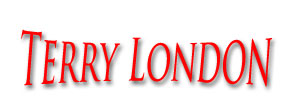

Specifications:
Njord reference digital cable
Price: $7,050
Website: www.jenalabs.com/
Terry’s associated equipment
Source:
Pass Labs DAC-1
Audio Note (UK) DAC 4.1 Balanced Signature
Reimyo DAP-999EX Toku
Mark Levinson 31.5 transport
Pro-Ject reference CD transport & LTA power supply
CEC-3 belt-driven transport
Amplification:
Coda S5.5 amplifier
SPL S100 amplifier
Threshold 550e amplifier
AricAudio Motherlode M11 preamplifier
Aric Audio Super 300b SET amplifier
SPL Elector preamplifier
Loudspeakers:
NSMT System Two
Tekton Design Ulfberth
Music Design Knight one
Accessories:
Black Cat 3200 loom
Jena Labs Njord AES/EBU digital cable
Kirmuss Audio Adrenaline speaker cables
Krolo Design reference rack & footers
Puritan Audio power conditioner & grounding system
Audio Archon power cords
3 thoughts on "Jena Labs Njord AES-EBU Digi-Link cable by Terry London"
Leave a Reply
Stereo Times Masthead
Publisher/Founder
Clement Perry
Editor
Dave Thomas
Senior Editors
Frank Alles, Mike Girardi, Russell Lichter, Terry London, Moreno Mitchell, Paul Szabady, Bill Wells, Mike Wright, and Stephen Yan,
Current Contributors
David Abramson, Tim Barrall, Dave Allison, Ron Cook, Lewis Dardick, John Hoffman, Dan Secula, Don Shaulis, Greg Simmons, Eric Teh, Greg Voth, Richard Willie, Ed Van Winkle, Rob Dockery, Richard Doran, and Daveed Turek
Site Management Clement Perry
Ad Designer: Martin Perry





Jena Labs is ne plus ultra quality and craftsmanship. Jennifer also provides fantastic consultation and customer service to support her product. We in the Portland audio community regard Jena Labs as more than the best in the business, Jena Labs is a regional treasure.
What a great handwork with a complex geometry!
The AES/EBU interface has a specified impedance of 110 ohms. Must be really difficult to achieve by hand-braiding!
Nice review, thanks. I’ve some experience with Jena Labs whom I’d consider a performance-first type of high-end audio co. I’ve owned 3 of their The TWO model line conditioners since 2017. These passive, dedicated, and bi-directional filtering LC’s edged out my previous Foundation Research LC’s who went defunct a few years earlier. How good were the Foundation Research LC’s? To the best of my knowledge, every reviewer who reviewed them purchased them for their reference systems. But the The TWO LC’s are better.
IME, finding superior line line conditioners that actually cleanse / purify the noisy AC coming in from the street is very much like looking for a needle in a haystack since most LC’s either do nothing or induce their own sonic harm / limitations. For those unfamiliar with superior line conditioning, once I’ve experienced its leaps and bounds sonic benefits, I find I can only tolerate listening to others’ systems with no/inferior line conditioning for about 10 to 15 minutes and I’m done.